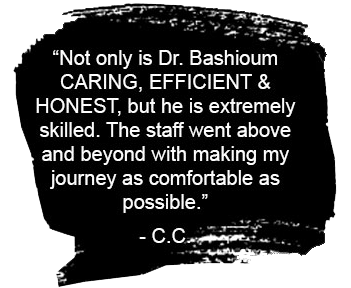Facelift: What’s in a Name?
March 15th, 2011
What’s in a name? I find it interesting that new terms used for cosmetic surgery procedures may often gloss over the seriousness of the surgery. The current euphemisms being used for a facelift are prime examples. As a result of this new terminology, I find patients do not want to hear that they need a facelift to correct their jowls or turkey neck. They prefer to hear words like facial rejuvenation, mini-lift, lower facelift, lunch-time lift, short incision facelift, short recovery facelift or better still (my favorite) the non-surgical facelift! A market driven economy has helped to put a happy face on anti-aging procedures, by trivializing this surgery to increase profits.
According to The American Society for Aesthetic Plastic Surgery, there were about 95,000 performed last year. Regardless of the trendy name, surgery is serious business. There is an element of swelling and bruising after facelift surgery, as with most facial procedures. It is difficult to cover or hide during the initial recovery period. For this reason, many patients choose not to be seen while they are recovering from a facelift. In a culture where youthful beauty is celebrated, few of us want to submit eagerly to the effects of aging. Surprisingly some patients are not self-conscience in the least and continue with all their social engagements.
Facelifts are also combined with many other facial procedures (nose surgery, eyelid surgery, facial implants, chemical and laser peels, and forehead lifts). When procedures are added to a facelift, it increases the amount and duration of swelling following surgery. Combining surgeries also increases risk factors. Because of the additional safety concerns, I strongly discourage patients from combining surgeries in my own practice.
What About Scars?
March 14th, 2011
All surgery leaves a scar, including cosmetic surgery. However, cosmetic surgery scars may be designed to be less visible. This is particularly the case with liposuction and breast enlargement surgery. Ideally all these scars are placed in such a way to be concealed by the smallest swim suit the patient chooses to wear. Most of us have observed minor injuries or surgery. If you reflect on how the scar on a skinned knee changes over time, you might recall that process requires months to mature or fade.
Scars on the face mature quicker than scars on the back. A freshly healed scar looks pink or red and feels hard. This is the normal appearance and feel of scar tissue within the first six weeks of surgery. New collagen that is deposited by healing cells, feels hard to the touch. In addition, the process of healing requires increased blood flow. The large number of capillaries make the new scar look red. Scar maturation is the process by which your body changes (remodels) the collagen and the capillaries in the scar.
Fortunately this process usually cycles to completion and results with a soft scar that is barely visible. Think of scars being a kind of Thanksgiving turkey “doneness” indicator. When the timer pops up, the turkey is done. When your scars are soft and no longer pink, you have an indication that your internal healing is also complete. In both cases it can take longer than you hope!
